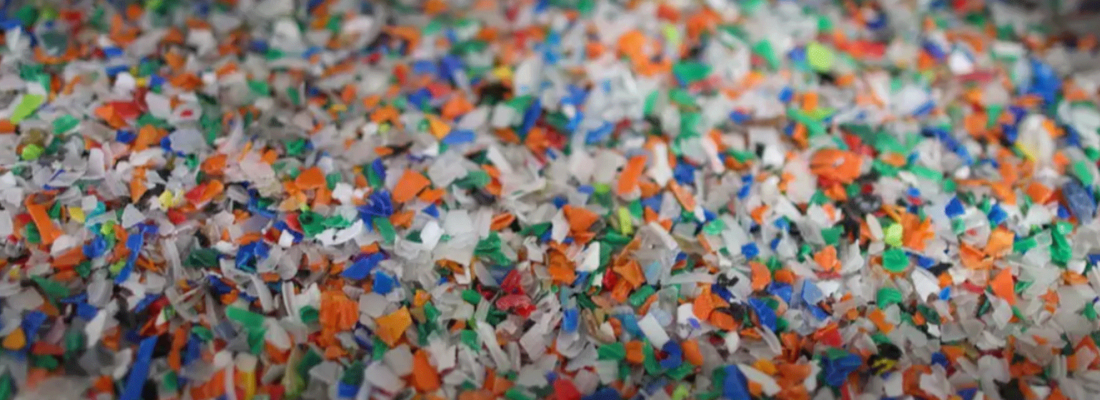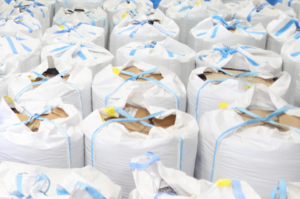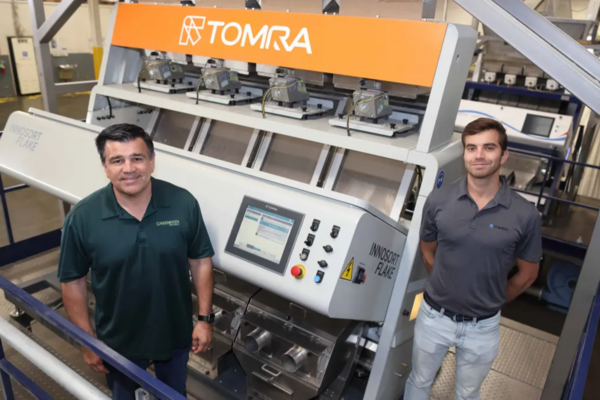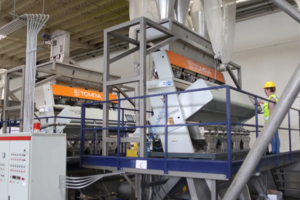The full-service recycler, processor and manufacturer has partnered with TOMRA Recycling Sorting to install and optimize a plastic flake sorting production line designed specifically to identify and separate polyolefin caps from carbonated and non-carbonated beverage bottles. Greenpath’s vision is to create the same type of effective recycling system for bottle closures that exists for bottle recycling. “We are at the genesis of creating a sorting system for caps similar to what is more common today for the bottle,” adds Eric Olsson, area segment manager, plastics for TOMRA Recycling Sorting.
Operating for more than 25 years with locations in California, Nevada and Texas, the vertically integrated Greenpath accepts a wide range of materials, and the flow of inbound materials can be somewhat inconsistent. However, this is where Castro sees the company’s advantage in offering value-added services. Greenpath creates value being a one-stop solution for suppliers and customers alike by taking mixed trailer loads and variable supply streams and producing consistent, quality products.
Materials received include paper, metals, and plastics. Considering only the polyolefin materials – low-density polyethylene (LDPE), high-density polyethylene (HDPE) and polypropylene (PP) – Greenpath accepts bottles, film, rigid plastics, and, of course, bottle caps. “Polypropylene and polyethylene (PE) are together the most abundant plastic family on earth, but the market is limited for valuable applications for mixed polyolefins,” comments Olsson.
Unfortunately, PE and PP have very close density characteristics and are challenging to separate into their different polymer types. That is why mixed polyolefins are primarily downcycled into more forgiving applications that allow for more contamination or a wider range of material specifications. “Alternatively, other companies use a ‘solution by dilution’ approach to include mixed polyolefins, using primarily virgin material and only a small fraction of recycled plastic,” informs Castro.
With Greenpath’s focus on delivering value-added services to its customers, the polyolefin cap conundrum has kept Castro up at night for the last 15 years when they first started washing and processing recycled bottle caps. He had a vision for a sorting process solution to deliver high quality, consistent separation of HDPE from PP to give brand owners and manufacturing companies the flexibility to confidently include PCR in their injection molding applications. “We are ultimately targeting 98% or greater purity levels,” offers Castro.
The quest for cap to cap
A beverage container commonly consists of four parts: the bottle, cap or closure, ring and label. States with recycled content laws for bottles have seen packaging companies and recyclers take the first step, focusing on the PET bottle, which comprises the bulk of the container’s weight. A more mature PET recycling infrastructure has led to brand owners incorporating up to 100% post-consumer recycled (PCR) material in their bottles.
As regulations stiffen to increase the percentage of recycled content by weight, the next logical container component to address is the cap. “Following Greenpath’s approach, the industry can move toward a 100% PCR by weight package using only mechanical sortation,” says Olsson.
For the cap to get to a recycler like Greenpath, the bottle is the carrier through the MRF. “Otherwise, the cap will get screened out in the front end of the circuit and more likely be landfilled,” mentions Castro.










